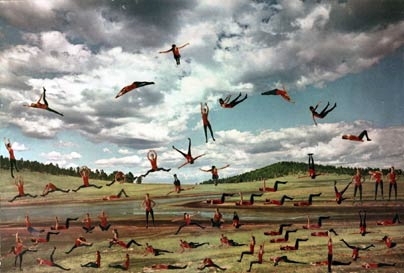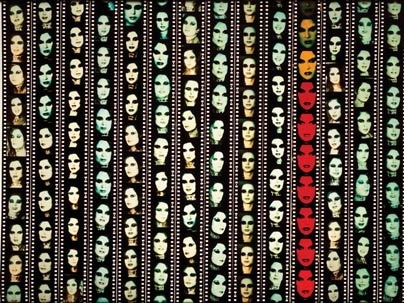"WACK! Art and the Feminist Revolution," published by MIT Press to accompany an exhibition of the same name, inspires challenging questions. The exhibition, originating in Los Angeles, is a collection of art produced by women during the height of the feminist movement, primarily the late 1960s through the 1970s. One of the purposes of the exhibition and its catalogue is to rouse discussion about both the impact of the feminist art movement and the need to re-examine this art today. The book and the exhibition are ambitious, confrontational and far-ranging in scope.
The WACK! exhibition, based in Los Angeles' Museum of Contemporary Art, was proposed and curated by Cornelia Butler. It is the largest-ever exhibition of work entirely by women artists; its level of ambition, commitment and organization is suggested by a glance at the page listing lenders to the exhibition--184 strong, many the artists themselves.
The catalogue includes not only full-color, high-quality plates, but also short biographies of each artist or collective and essays by respected art history scholars. The attention to design is evident from the arresting wraparound cover image depicting Martha Rosler's "Body Beautiful, or Beauty Knows No Pain: Hot House, or Harem," a tangle of women's bodies, mostly nudes, and the positioning of the title in white, heavyweight print. This is perhaps not a book to display on the coffee table, unless you desire to make a bold statement.
"WACK!" is divided into three sections: the plates, the biographies and the essays, bookended by Butler's introduction and a chronology of all-women group exhibitions from 1943 to 1983. Here again, the attention to detail is evident from the texture and color of the paper: glossy for the plates, apricot-colored for the biographies (this and the narrow column setting makes them look like aged newsprint) and plain off-white for the essays.
The arrangement allows the reader to first examine the work on its own, then to learn more about the artists, and finally to read in depth about the movement. The format also encourages flipping backwards and forwards through the pages to reference plates or bios.
The scope of the works--from harrowing performances such as that of Marina Abramovic and Gina Pane to paintings by Joan Semmel and Judith F. Baca--and the amount of information included permit even the uninformed reader to form well-grounded opinions and make connections among artists and artworks. Readers not as familiar with feminist art will encounter artists not well known in the United States.
The organizers were intent on including an international spectrum of artists and succeeded in bringing together the work of artists from 21 countries. These artists' contributions encompass a diversity of ideas and cultural influences that may be outside many Westerners' awareness.
Ironically, considering the international flavor of the show, the American artists included are overwhelmingly white: Six black American women are included individually, compared to about 60 white American women. The event-poster artwork from Spiderwoman Theater (a Native-American collective founded in 1975 and still active today) and Where We At (an African-American collective active between 1971 and 1997) does not seem like enough to represent the rich output from these groups. Valerie Smith's essay, "Abundant Evidence: Black Women Artists of the 1960s and 70s," provides more substance, if not more visual richness.
Why "WACK!" now? As Butler says in her introduction, "the impact of feminist art has yet to be fully theorized and accepted by academic and museum institutions." She could have added "the general public" to that list. Though many of these artists are already well respected by both the art world and the general public--Cindy Sherman and Alice Neel, for example--others continue to shock.
One could argue that with the popularity of television shows like "America's Next Top Model," and "Pussycat Dolls: The Search for the Next Doll," there is a clear need for women to speak out as people with complex ideas, not just as pretty faces and sexy bodies. One of the strongest arguments for this exhibition and book is probably that art movements, as representative of historical periods, are in need of ongoing examination. The feminist art movement is one of the most misunderstood in the history of art, in large part because it was so different from previous and contemporary movements. It seems likely that "WACK!" will stimulate further conversation.
A version of this article appeared in MIT Tech Talk on May 2, 2007 (download PDF).








